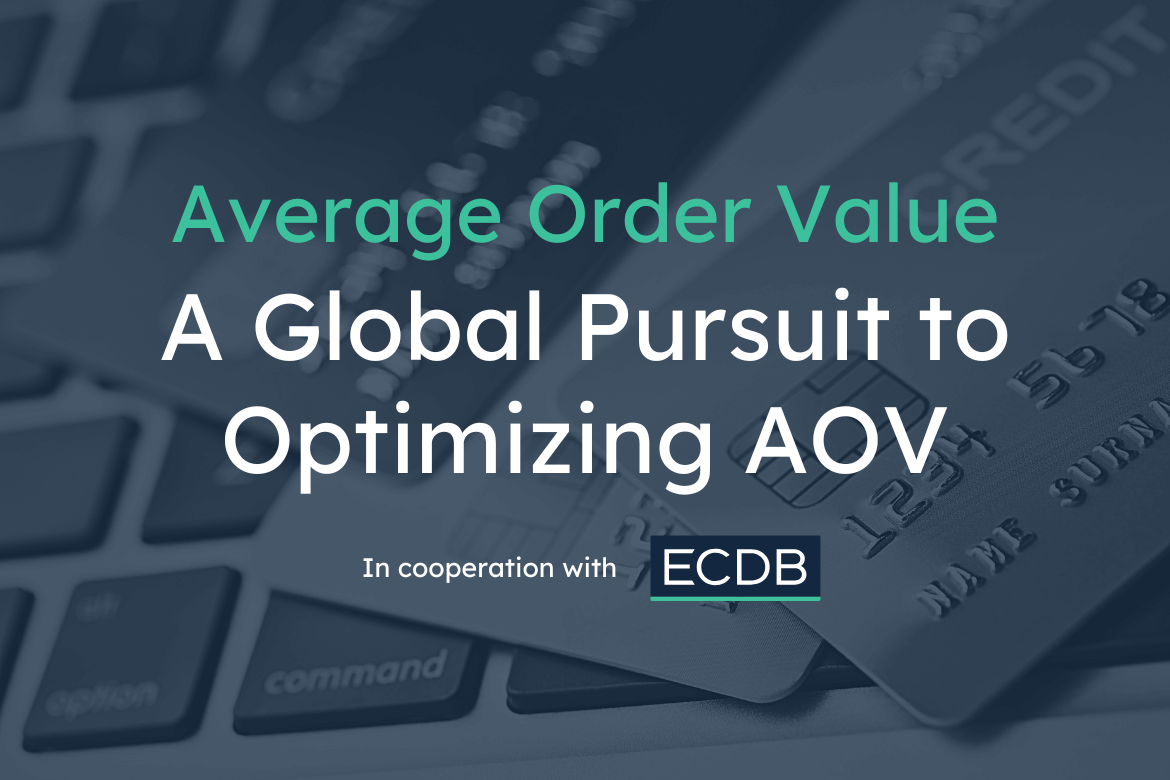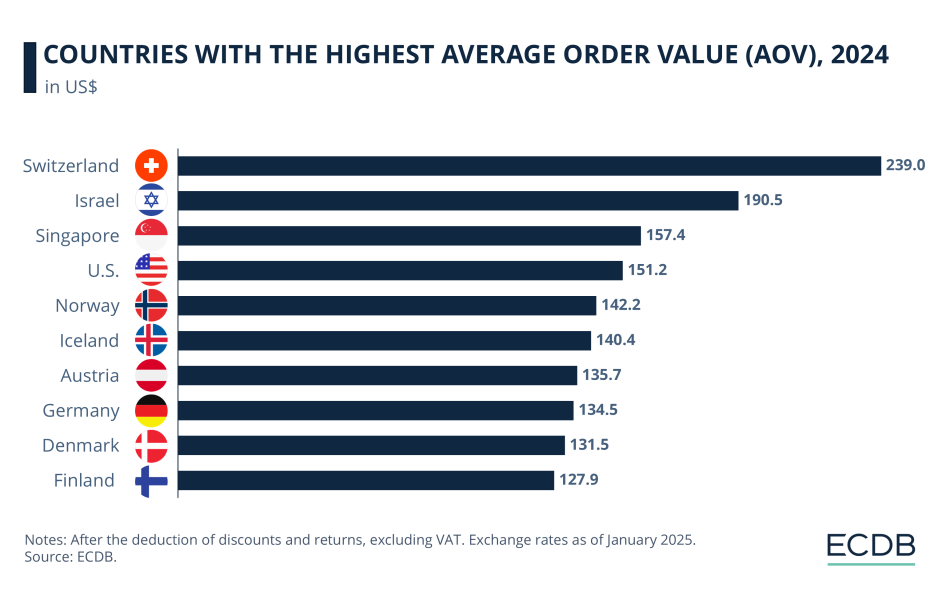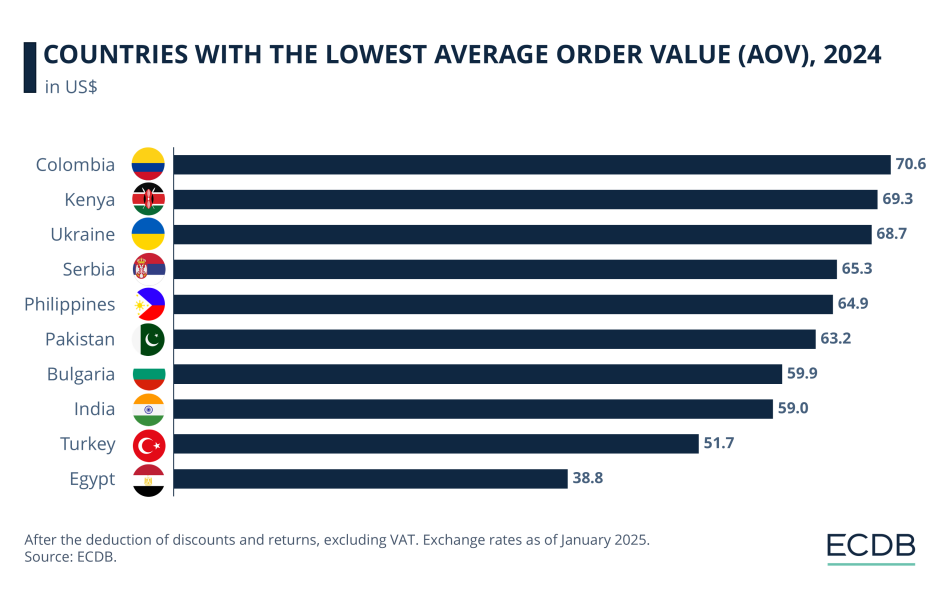Discussing global average order value: European eCommerce orders tend to be highest
Written by
Editorial TeamPublished on
Discover how global eCommerce spending habits differ. Backed by ECDB data, this article reveals fascinating insights into which countries lead in Average Order Value (AOV) and why factors like income levels and digital infrastructure make all the difference. (Ad)

Commercial collaboration
By Nadine Koutsou-Wehling, Data Journalist at ECDB
Average order value (AOV) is used as a measure of how well a company is selling and marketing its products to consumers. To determine what AOV is appropriate, there are two main factors to consider: The country and product category in question.
Valuables like jewelry and precious metals will have a higher AOV than everyday necessities. For countries, economic conditions and digital development are key. In general, a high AOV reflects high income levels, good digital infrastructure and a willingness to spend a good amount on online orders.
With ECDB data, you can find out where AOV stands in the country of your interest. Here is a discussion of the top 10 and bottom 10.
Calculating AOV: A quick definition
But first things first: How is an AOV calculated?
At ECDB, the AOV is calculated by dividing revenue by orders. More precisely, this means subtracting discounts and returns from total revenue. The equation is as follows:
(Revenue – Discounts – Returns) / Number of Orders = Net AOV
The global AOV across all product categories is US$116.1. This is how much is spent on an average eCommerce order worldwide, without focusing on a specific product category.
The country perspective shows deep differences and regional clusters. They are seen in the data provided in the ECDB Transaction KPI Tool.
Switzerland leads the ranking of top 10 AOV countries
The leading market in terms of AOV size is Switzerland, where consumers spent an average of US$239.0 on an eCommerce order in 2024, more than double the global average. This is by far the highest value of any country. It reflects Switzerland’s high income level and the wide digital integration of its economy.
The next highest AOV levels are found in Israel, Singapore, and the United States. Israel in particular stands out after Switzerland with a high average order value of US$190.5. Singapore and the U.S. stand closer to the other ranks with values between US$150 and US$160.

Ranks 5 to 10 are all European countries, ranging from Norway with an AOV of US$142.2 to Finland with US$127.9. The prevalence of European countries in the ranking is related to the continent’s generally high income level and subsequent advanced digital integration.
At the lower end of the AOV spectrum are countries with varying levels of AOV, some of which are also in Europe.
Egypt at the bottom of the AOV list
As with the countries with the highest AOVs, there are economic and infrastructural reasons for the average level of spending on eCommerce orders in each country. The market with the lowest AOV is Egypt, where the average order value is US$38.8. Egypt’s AOV is quite far from the other markets, which start again at an AOV of US$50.

Turkey has the second lowest AOV at US$51.7. It is followed by India, Bulgaria, Pakistan and the Philippines. Especially the case of India shows that AOV itself is not necessarily an indicator of overall eCommerce performance. Because India has recently surpassed China as the country with the largest population, the collective power of smaller eCommerce orders contributes to its position as 7th largest eCommerce market.
Serbia and Ukraine are two European countries among the 10 markets with the lowest AOV. They are just behind Kenya and Colombia. There are many factors at play here. Ukraine is obviously experiencing political hardship with the war in the country, while Serbia is still developing its infrastructure. Combine these factors with an overall lower income level, and you have less discretionary income to spend on eCommerce orders.
Why you need a differentiated view to succeed
Keeping these standard AOVs in mind is important because in some countries, it is common for consumers to spend a lot on their purchases on a regular basis. In others, eCommerce spending is lower, so higher prices will discourage users from purchasing a product. In general, average income levels play a role, as do online penetration and the size of the eCommerce market.
***


